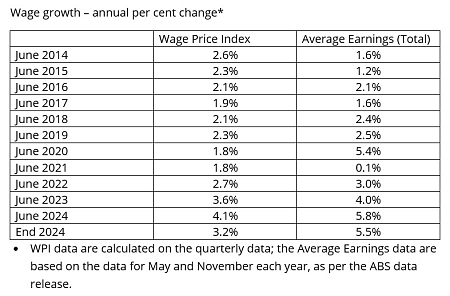The economy is a dominant issue in the Election. From now until polling day, Independent Australia will outline some key facts on the economy that put the kybosh on many of the myths, lies and distortions being peddled in the election campaign.
This is the third in a series of short articles by leading economist Stephen Koukoulas, which will be published daily up until the Federal Election on Saturday 3 May 2025.
FACT THREE: WAGE GROWTH IS MATERIALLY STRONGER UNDER THE LABOR GOVERNMENT
One of the fundamental problems of the economy when the Coalition lost the May 2022 Election was the miserable level of wage increases. This hurt workers and was the catalyst of the cost of living crisis.
One of Labor’s key policy objectives during the 2022 election campaign was to deliver increases in wages to correct the many years of wage oppression.
It has succeeded.
There are two main measures of wage growth – the Wage Price Index and Average Total Earnings.
They are calculated differently, with the WPI estimating:
‘...pure price change [in wages] by removing the effect of compositional factors. This includes the quality or quantity of work performed or the composition of the workforce.’
The average earnings measure the level of average gross weekly earnings associated with employees. In doing so, it takes account of compositional changes in the labour market, including the effect of promotions, overtime and bonuses. It is a better guide to the change in workers’ pay packets.
The following table outlines the annual increase in both measures of wages. Note that the data up to and including June 2022 were the result of Coalition economic management. From June 2023, the wage increases are under the policies of the Labor Government.

Under the policies of the Coalition, the annual increase in the WPI was 2.7% or lower. Wages growth has been above 3% in even year for the Labor Government.
For the Average Total Earnings data, wage growth was 3% or less every year except 2020, which included the impact of JobKeeper, while under Labor, Total Earning growth has been between 4–5.8%.
Don't be misled by media BS. These are the facts.
Other facts in this series:
- #1: In fact, Labor has inflation back under control
- #2: Energy prices are plummeting
- #4: Labor brought down government debt by billions
- #5: Labor building on a better future
- #6: Coalition taxing at a record high, not Labor
- #7: Under Labor, Australia is more productive
- #8: Australia among best in the world at beating inflation
- #9: Australia keeping tax down
- #10: Employment rising under Labor
Stephen Koukoulas is one of Australia’s most respected economists, a past chief economist of Citibank and senior economic advisor to an Australian Prime Minister. You can follow Stephen on Twitter/X @TheKouk.
 This work is licensed under a Creative Commons Attribution-NonCommercial-NoDerivs 3.0 Australia License
This work is licensed under a Creative Commons Attribution-NonCommercial-NoDerivs 3.0 Australia License
Support independent journalism Subscribe to IA.












